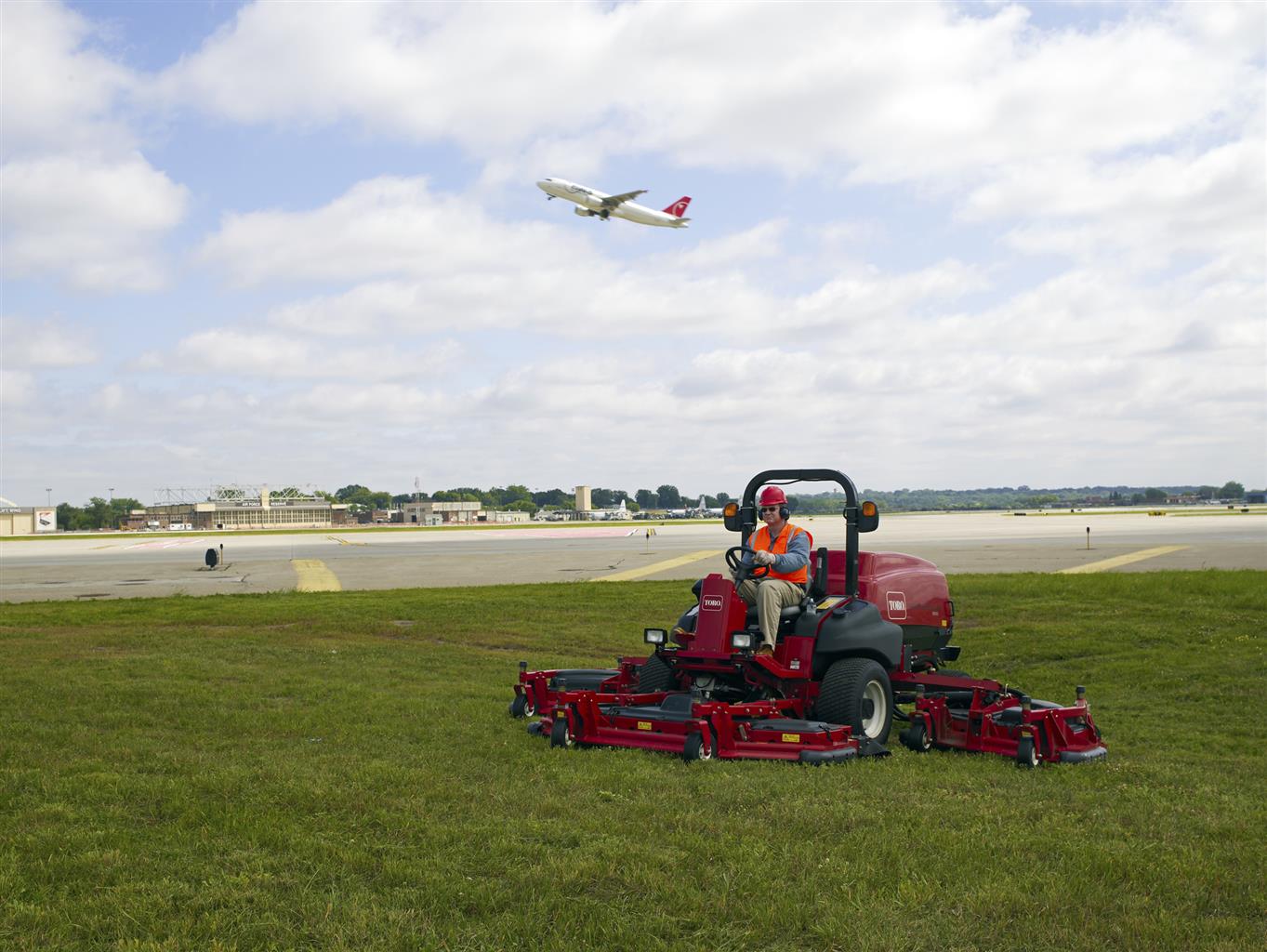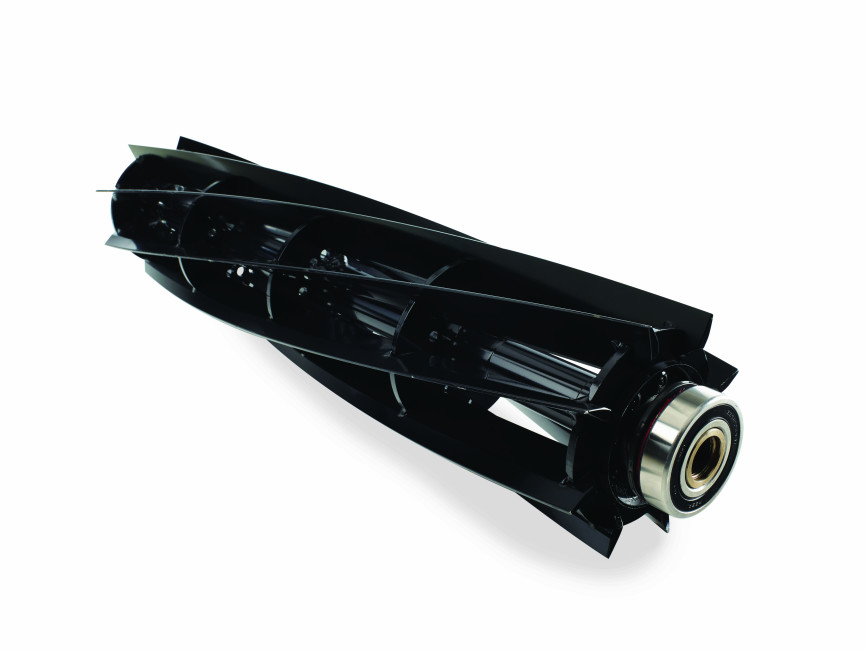Inside cylinder maintenance: our tips and tricks for peak performance
Proper cylinder maintenance and cutting performance go hand in hand – that never changes. But as products and materials evolve over time, the parameters for ‘proper maintenance’ can shift.
Cylinder mowers are precision tools and, as such, it’s essential they’re adjusted and operated with this in mind; performance depends on proper set-up and adjustment procedures, so it’s always worth revisiting the basics to make sure you’re doing them right.

The importance of cylinder maintenance for the ultimate cut
An error of just 0.25 mm in cut height, end-to-end, or from one cutting unit to another, can produce a visible mismatch, giving your turf an amateur finish.
Although there are design variations in cutting units, most require the same basic procedures during setup: surface plate, accurate height of cut tools, and following proper instructions (see manufacturer’s recommendations), for instance.
If a cylinder mower’s unique characteristics are not understood and responded to, the result will be a poor quality cut as well as potential downtime and repairs, which can prove costly. However, when properly maintained and operated, cylinder mowers can provide a superior quality of cut.
A consistent maintenance routine ensures peak performance
To get started, here’s our handy daily and periodic maintenance checklist to follow for best practise:
Check daily
- Bedknife to cylinder adjustment (calibration)
- Edge sharpness
- Height of cut
Check periodically
- Roller condition
- Cylinder bearings
- Bedknife attitude
- Roller parallelism
- General mechanical condition

Calibration is key to machine longevity… and cost-savings
If you want a cutting unit to perform well for the longest period of time without constantly having to resharpen or readjust it, then maintaining the parallelism between the bedknife and the cylinder is essential.
If those two components are sharpened, installed, and working together properly, you’ll get Toro’s legendary performance from your mower cylinders for many years to come.
How to calibrate your blades
You should always check whether your bedknife is too close to the cylinder because if it is then not only will this wear the blade and cylinder down faster, but the mower will use more fuel to propel it along – adding more fuel costs on top of those for repair and maintenance.
Top tip:
- Check the distance of the cylinder to the bedknife and continue checking it (you don’t want it too tight or too slack)
- There should be light contact – just enough to get a couple of bits of paper in (you can use a feeler gauge)
If it’s set up too tight, you’ll wear down the component faster. This means the hydraulic and engine management system will demand more horsepower because there’s more resistance; and generating more power means you use up more fuel, causing costs to go up. Whereas, the less contact you have, the less energy is required from the power unit.

Backlapping is a maintenance must for the perfect cut
Backlapping is a quick and easy way to maintain the sharpness of the cylinder and bedknife between grindings – without having to remove the cylinder and bedbar.
Tips for brilliant backlapping
Park your machine, turn it on, apply the desired lapping paste to the cylinder, and set it to backlapping mode. The machine runs in reverse and the paste acts as a grinder, sharpening the blade.
Though it’s always better to take the cylinder off and put it on a proper grinder, backlapping is a quick way of maintaining sharpness between proper grinding – only taking about five or 10 minutes. (Any longer, and you’ll need a proper grinder.)
Frequency and regularity are hard to define as machines will differ. For customers doing around 400 hours, we will complete two regrinds a year on greens equipment and one on fairway mowers and machinery.
Top tip:
We recommend grinding over the winter period before the new growth arrives in the spring, and then again mid-season; any extra sharpening in between can be done by backlapping.
How to care for cylinders
When a set of units come in, we first do a full strip-down and clean, checking how much wear there is on the cylinder. Generally, a five-inch cylinder will have a wear limit of 4.5 inches in diameter before you need to replace them.
If you look after them, you’ll get five years out of them but again, it depends on the operating conditions and hours of use. Most maintenance teams and greenkeepers will do the work as they’ll soon see the knock-on effects on the course if they don’t!
How to care for rotary mowers
While cylinder mowers are essential for pristine putting greens, we shouldn’t forget the role of the rotary.
There are several options with a rotary mower. You can choose a high sail blade to get rid of clippings quicker or a mulching blade to keep cuttings in the chamber longer. What works on one course might not work on another, so it’s worth asking your dealer what’s best for your sward.
While there’s less maintenance on a rotary mower, you still have to clean the deck, sharpen the blade, and check all support roller bearings to make sure you’re getting the best out of your mower.
Top tips:
- Blades need to be checked for sharpness; if they’re dull or blunt, they won’t give you a clean cut and could tear your turf leaf
- A tear generally promotes disease which is another problem for the greenkeeper
Don’t forget to clean your machine
Keeping your kit clean and free from debris, grass, mud, twigs, sand, topdressing, and litter is essential. Most units should be washed every day after cutting to ensure the cylinder and bed knife have a clean surface to cut.
And with worm casts a potential problem for greenkeepers, there’s even more emphasis to do a regular and thorough job. Worm casts are like a gritty paste, which wears down and blunts everything, so make sure you stay on top of them by brushing and blowing fairways.
Dealers and service managers play an important role – remember to use them
Even the highest-quality components, such as EdgeMax bedknives and EdgeSeries cylinders, won’t make a difference without proper setup and maintenance. That’s why it’s so important for those caring for the machines to have the latest recommendations.
Working with a manufacturer’s official service dealer gives you that reassurance. While others may be able to fix things for less with non-brand aftermarket parts, manufacturers know official dealers will deliver a higher level of quality in all areas – customer service, part quality, increased lifespan, and access to the specific manufacturer’s network, to name a few.
How dealers and service managers can help your business
Official dealers have access to the knowledge and expertise of the manufacturer. Cutting units have a lot of elements – from spacers and bearings to bushes and blades – and official dealers can diagnose problems before they happen, finding the best parts to give your mower a longer life.
For example, Toro EdgeMax bedknives and EdgeSeries cylinders are made of tougher steel than standard alternatives – but this then calls for slight nuances in how they should be ground and sharpened. That sort of knowledge really helps when providing the best possible level of service and maintenance.
Trusted by Toro, trusted by our customers
In the case of Toro, not only are we able to access their wealth of knowledge, but we’re also constantly learning from the field. When we find a better way to do something, we share it because we want to help our customers get the most out of their equipment investment.
As a result, even technicians who have been using the same procedures for a long time may pick up new tips that help improve mower performance. Our service managers liaise with customers to assess what needs to be done and let them know what we find as we work.
Don’t underestimate the value of genuine parts
We don’t just respond to specific requests, we discuss any issues we come across as we work. As part of our ReeAssure maintenance service plans, customers not only benefit from routine and scheduled servicing, fixed fees for better budget and cost control and free annual health checks, but the reassurance that comes from only using genuine Toro parts – a factor that should not be overlooked.
Take bearings, for instance. Our local bearing company has three options: lower, medium, and higher quality. We know others use poorer quality bearings to stay competitive on price. They save a bit of money for their customers but it’s not effective in the long run. And experience proves this: non-Toro parts come straight back to us.
Attaining the ultimate cut is easier than you think…
By spending time on regular cleaning, calibration, paralleling, and sharpening, greenkeepers can avoid larger, more expensive problems of neglect that build over the long term: poor cut, unhealthy grass, expensive repairs, and replacements.
And, when doing repairs, spending a little more on premium, genuine parts, owners ensure the best performance of their machines.
Cheaper aftermarket parts may save a few pounds upfront, but chances are you’ll be buying another one far sooner than a premium part. And that’s not even mentioning the fact it could damage your machine!
To learn more about how our official dealer network could help your business, call us on 01480 226800.

